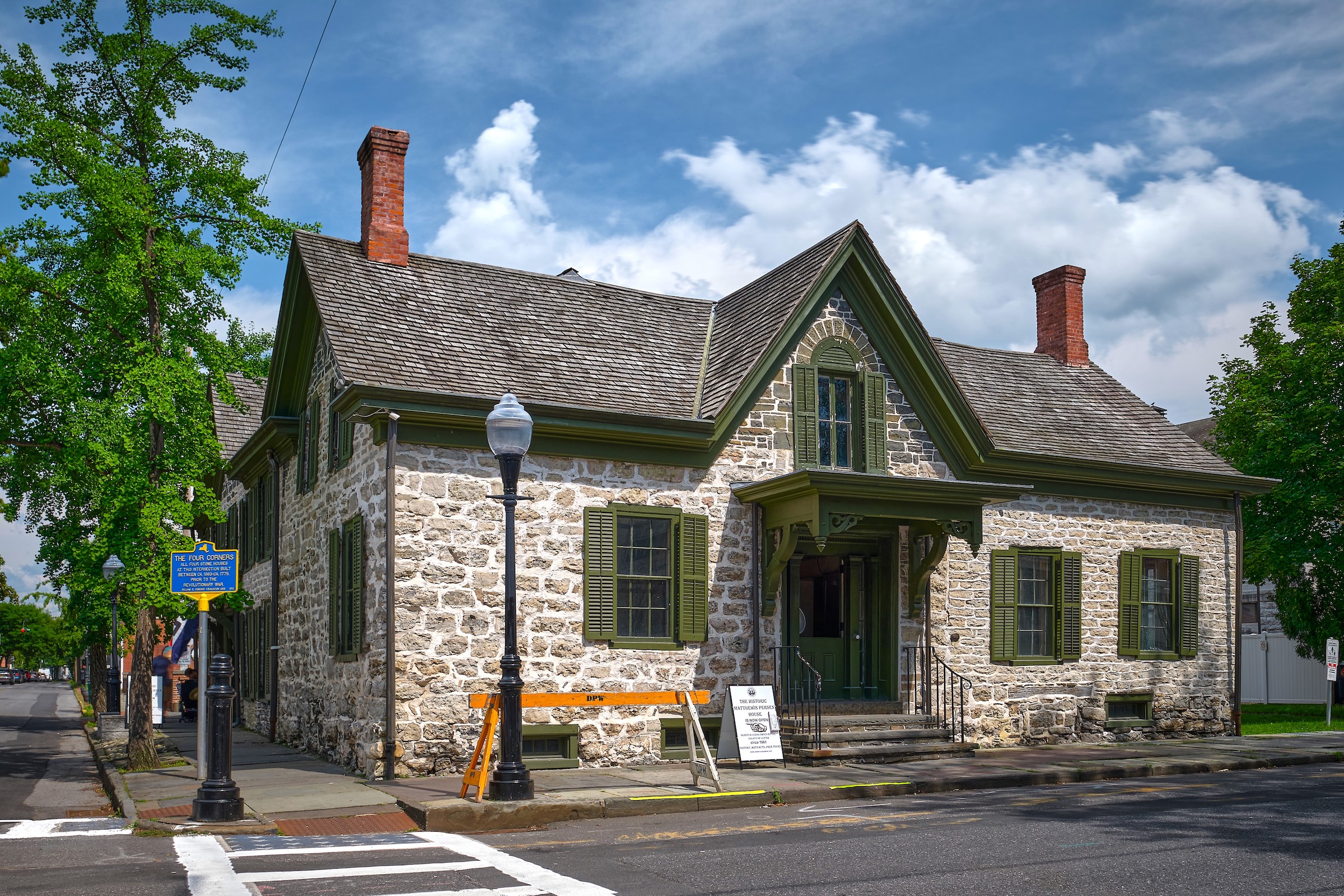The Matthewis Persen House Museum and Cultural Heritage Center, a stone building at the only intersection in the United States with a pre-Revolutionary building on each corner, will soon undergo a facade repair and other renovations.
Ulster County received a $558,232 grant from the New York State Office of Parks, Recreation, and Historic Preservation to repair the building, home to a museum of colonial American history, Ulster County Executive Jen Metzger announced on December 30. The 17th-century home, located in the Stockade National Historic District, sits at the intersection of Crown and John Streets in Kingston, New York.
The funds will go toward replacing the house’s declining wooden roof and other exterior interventions, Metzger said. She added that renovations will allow the museum to extend its operation season, which currently runs from May through October due to its lack of heating.
“The Persen House needs a new roof,” Taylor Bruck, acting Ulster County clerk, told Hyperallergic. “It’s one of the oldest houses in the county … so the roof is complicated and is in desperate need of repair.”
Bruck said the county will keep as “much of the original material as possible” to preserve the historical character of the building. The timeline for the repairs has not yet been determined, Bruck added.
The home, built in installments from around 1661 to 1922, was the birthplace, longtime residence, and workplace of Matthewis Persen, who operated a tavern there until he died at age 80 in around 1819.
Following Persen’s death, Dr. John Goodwin operated a grocery store and apothecary out of the building.
By 1914, the house had come under the ownership of Ulster County, and the building became a farm services extension. Later, it became the Cornell University Cooperative Extension until November 1999, when the structure began to exhibit “serious structural roof failure,” according to a 2000 architectural report. That year, the county began to convert the home into a public-facing space.

In 2004, archaeologist Joseph E. Diamond uncovered artifacts during an excavation of the structure’s interior and three units outside the home. Ultimately, the site contained a trove of around 20,000 artifacts, including prehistoric Native American pottery and projectile points dating as far back as 1,500 BCE, some of which are included in rotating exhibitions at the museum.
“The house played host to, and continues to reflect, the diverse cultural groups who have called this land home, including Esopus native people, Dutch and English colonists, and free and enslaved Africans,” Metzger said.
Over the past five years, Metzger said in a press release, museum visitorship has nearly doubled to 6,000 visitors per year.
“Support for historic preservation such as this is vital to ensuring this important historic site and innovative museum can continue to introduce visitors to the complex history of Kingston and the surrounding region for generations to come,” noted Ulster County Historian Eddie Moran.

